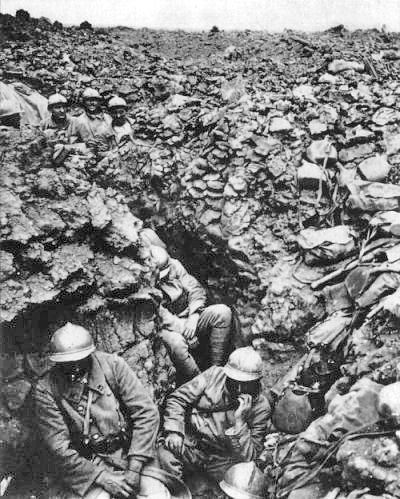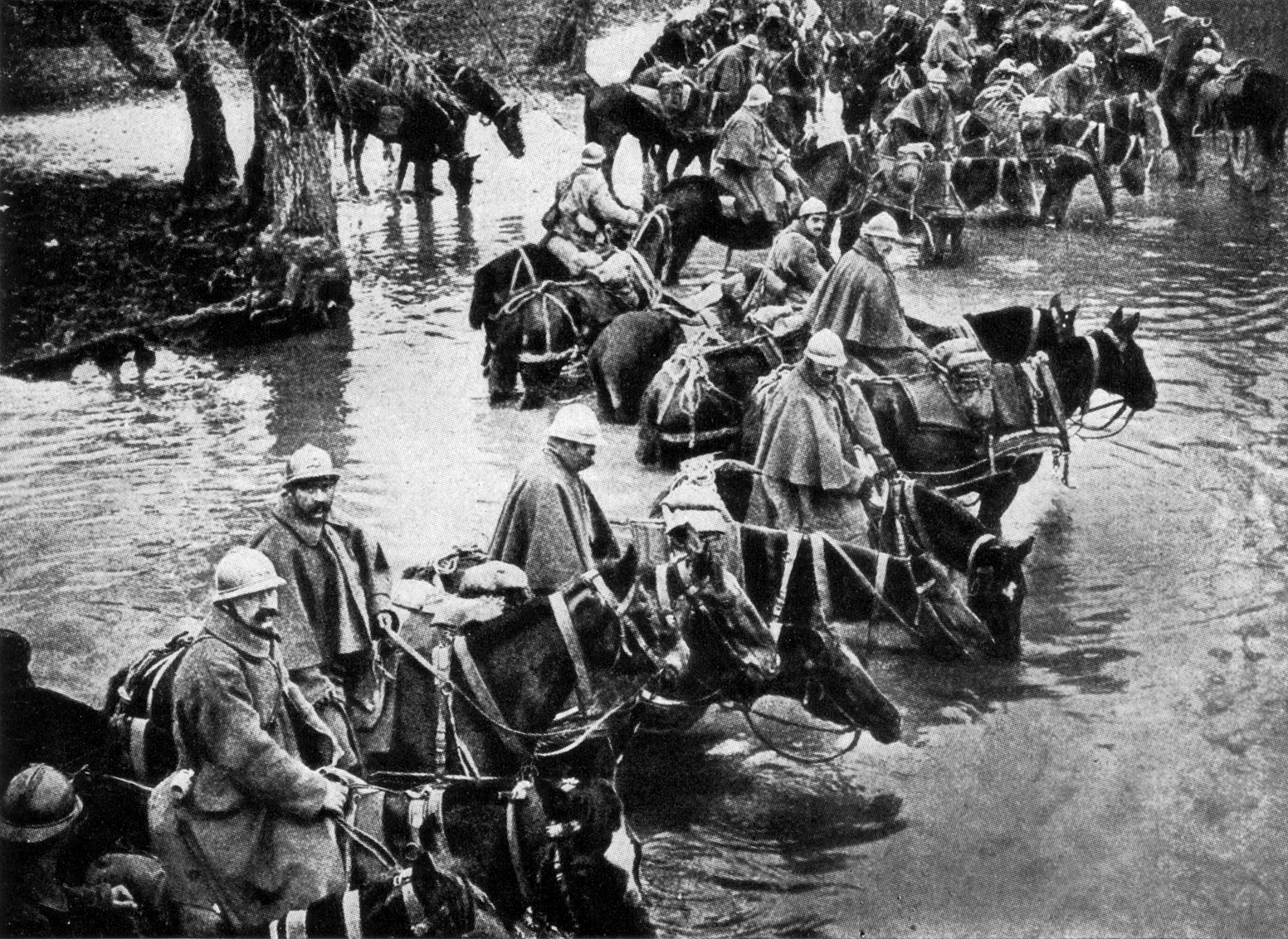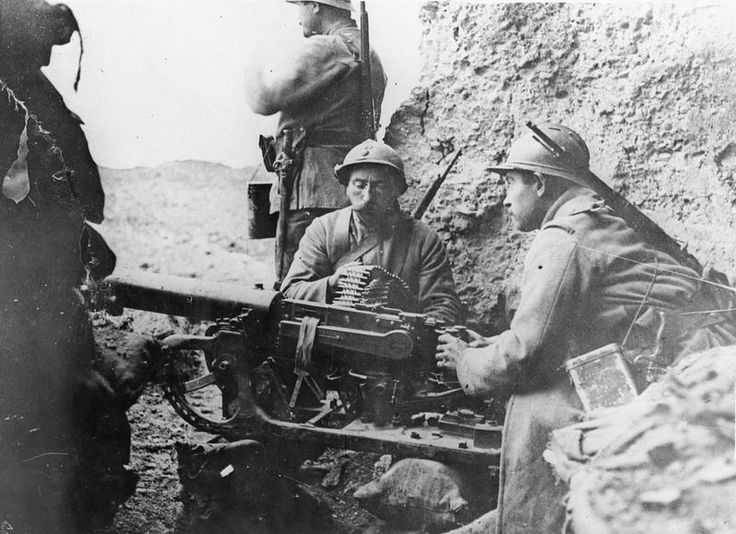French Town on Verge of Collapse;
Pleas to British: Launch Offensive at the Somme Now.
Haig Hesitates.
Special to The Great War Project.
(17-20 June) The French are putting intense pressure on Great Britain to launch a massive attack on German forces at the River Somme in northern France.
The Allies have been planning this offensive for months. There is a massive build-up of military infrastructure to support such an offensive.
The French are desperate for the British to launch soon. It’s the only way, they argue, to prevent a collapse of the French forces at Verdun.

French defenses at Verdun, date uncertain, spring 1916.
According to historian Martin Gilbert, the British Commander General Sir Douglas Haig is committed to begin the offensive on June 29th a century ago.
For the French, that’s not good enough. They fear that if the last fort defending Verdun, Fort Souville, falls, “Verdun would become untenable,” Gilbert reports.
The struggle for Verdun began in mid-February, and the French are committed to defending it to the last man. During the time since according to war historian John Keegan, twenty million shells were fired into the battle zone — twenty million.
“The shape of the landscape had been permanently altered, forests had been reduced to splinters, villages had disappeared.”
“Worse by far,” writes Keegan, “was the destruction of human life.” By this time at Verdun a century ago, “over 200,000 men had been killed or wounded on each side.”
“Verdun had become a place of terror and death that could not yield victory.”
Now it is on the verge of collapse.
Haig is a stubborn man and refuses to order the beginning of the Somme offensive for another ten days. So the French Prime Minister himself “went to see Haig…to ask him to attack sooner. Haig said it was too late to do so.”

Allies moving horse near to Verdun, spring 1916
Haig tells the prime minister, Aristide Briand, that the massive artillery barrage preceding the attack will take place as planned.
The British are preparing the largest artillery bombardment in the war so far…
…reports Gilbert, indeed “the longest concentrated artillery bombardment in modern warfare.” It is set to last five days, preparing the way for a massive ground attack.
The British plan for the Somme offensive is to use the artillery to break through the concentrated German barbed wire defenses. It is Haig’s hope at this point according to a letter he writes to the British General Staff that “the advance was to be pressed eastward far enough to enable our cavalry to push through into the open country beyond the enemy’s prepared lines of defense.”
The preparations for the Somme offensive have been underway for weeks. “Nothing seems to have been spared,” writes one British officer in his diary, “to make this show a success – nothing seems to have been overlooked.”
Still there are many doubts. Haig himself “did not trust his men’s capacity,” writes historian Norman Stone, “and therefore relied on crushing bombardment. True…the quantities of materiel available seemed enormous, but that was not really the case, given the scale of the task.”

French with captured German gun, circa spring 1916.
Many of the shells are duds. Many of the soldiers are not trained effectively.
Telephone and radio are likely to break down, reports Stone.
And the artillery shells themselves may not be the most effective given the task at hand. They utilize shrapnel, reports Stone, “which exploded in the air above a defensive position, scattering projectiles, may be useful for cutting barbed wire but not against the deep dugouts that the Germans were now constructing as a matter of course.”
Despite these shortcomings, the British are set to attack at the Somme in just a few days’ time, a century ago.
